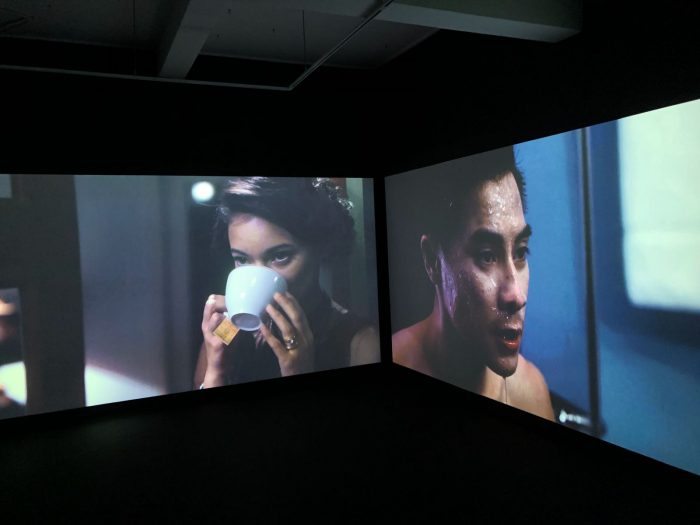
Cinerama Analysis
- Wear You All Night by Sarah Choo Jing
2017
Two-channel video with sound
Duration 4:38 mins
https://vimeo.com/217993621
Description & Analysis:
Wear You All Night depicts a man and a woman coexisting in the same space, yet they are separated by the split screens, which evokes romantic estrangement typical of cinematic conventions in films like Wong Kar Wai’s “In the mood for love”. The characters are isolated and can be seen going about their daily routine without interaction with one another. Although both characters were filmed separately, the unspoken connection between them was evident, through the alignment of the screens, and lighting and the room setting.
Quiet, sneaky actions suggest the act of leaving, escaping and abandonment.
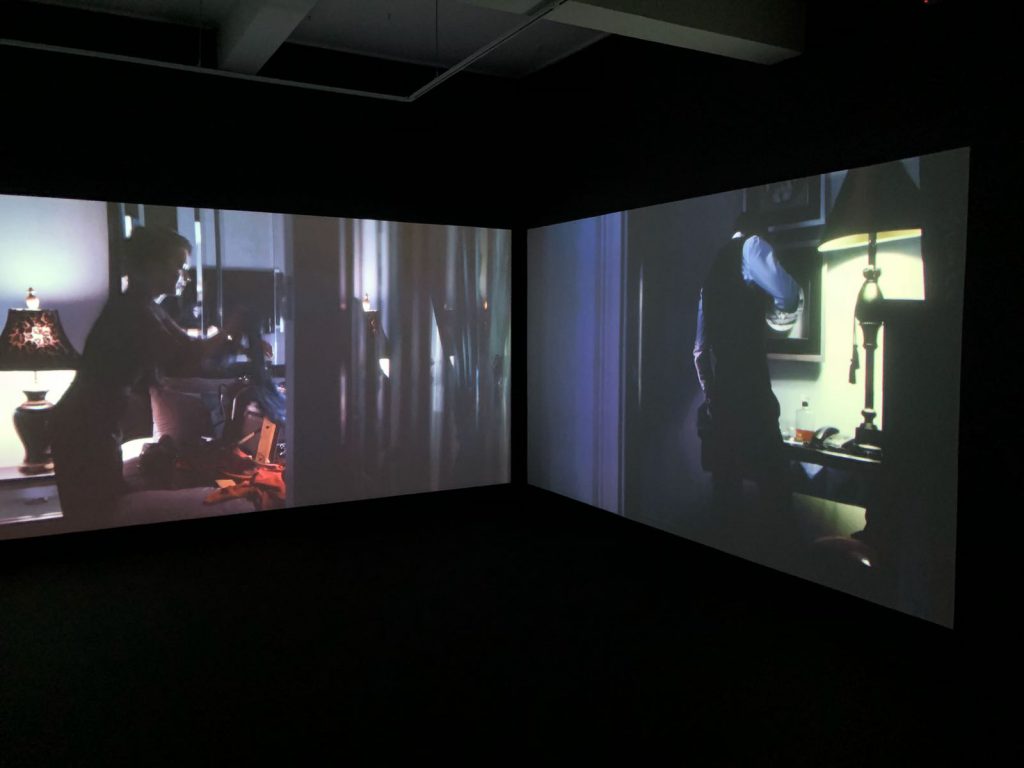
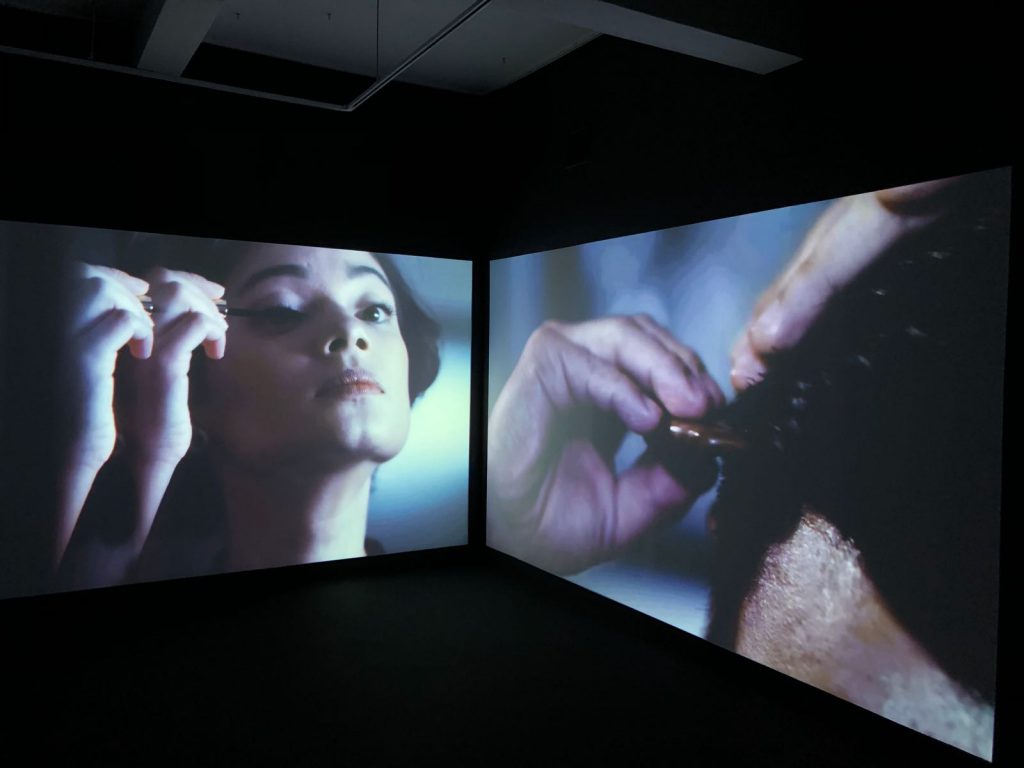
Response:
Characters are framed strategically by the rooms and luxurious objects and the stationary camera shooting from a distance creates the CCTV-esque effect that the characters are being watched. At first glance, one would think that the installation is for a luxury brand commercial. However, there is a sense of tension between the two frames as a result of the framing of the scenes and the detached gazes of the male and female character. Yet, certain camera angles suggest that the rooms may be conjoined or exist within the same house, further highlighting the emotional estrangement despite their physical closeness.
The war-zone soundscape was a very interesting addition to the piece, which helped us understand the relationship between both parties. A stark contrast to the visuals, the soundscape significantly heightened the emotional intensity and magnified the emotional textures of the narrative on screen. As such, a slightly aggressive, melodramatic relationship is suggested, from the exaggerated nature of the audiovisual experience.
About Choo:
Sarah Choo (b. 1990, Singapore) is known for her interdisciplinary approach to photography, video and installation. Her work depicts identifiable moments and characters within contemporary urban society suggesting a plethora of private and often solitary narratives. The artist is concerned with the gaze of the flaneur, voyeurism and the uncanny. Her research process involves reflection and writing. She begins and ends her work with sketches and ramblings on her journal. There is not a specific, linear storyline in her works as she believes that any piece of artwork that can capture the viewer’s attention and make him/her contemplate/reflect upon what is presented at face value, makes for a worthy piece of art.
(http://www.sarahchoojing.com/about.html) - Making Chinatown by Ming Wong
2012
Mixed-media installation featuring a five-channel video
Dimensions variable
https://vimeo.com/46673548
Description & Analysis:
Making Chinatown is an immersive installation where each of the five videos are played and positioned against the printed backdrops from their respective scenes. As a parodic reinterpretation of Roman Polanski’s seminal 1974 film ‘Chinatown’, Wong re-enacts the iconic scenes from the film while playing all the key characters all by himself. Through the usage of backdrops from ‘Chinatown’ film stills, he aims to capture the cinematic qualities of Los Angeles neighbourhoods and focuses on the topic filmmaking in the American context.

 Stills from Making Chinatown (http://www.mingwong.org/making-chinatown)
Stills from Making Chinatown (http://www.mingwong.org/making-chinatown)
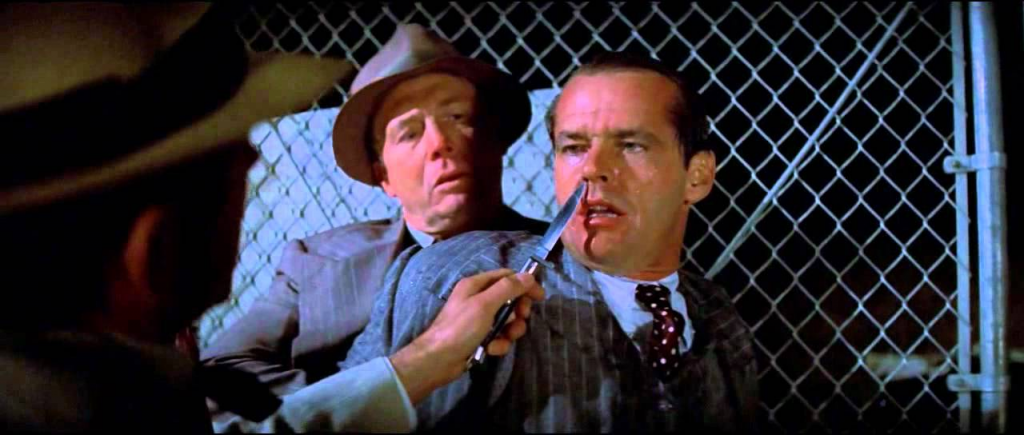
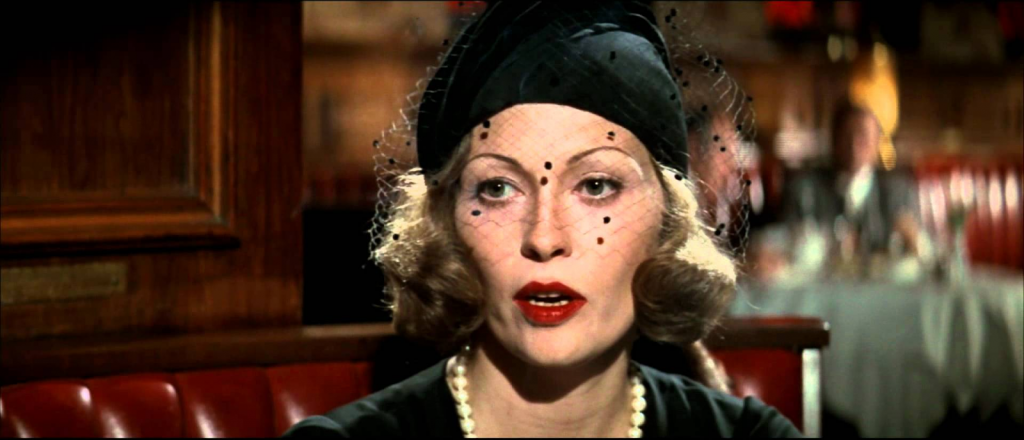
Stills from Roman Polanski’s ‘Chinatown’
Key roles played by Wong:
J.J. “Jake” Gittes (originally played by Jack Nicholson), Evelyn Cross Mulwray (originally played by Faye Dunaway), Noah Cross (originally played by John Huston), Katherine Cross (originally played by Belinda Palmer)
The gallery is transformed into a space resembling a studio backlot, bringing the viewers into a behind-the-scenes setting of the film. Through this setup, Wong highlights the artifice of cinematic productions by deconstructing the making of the film and presenting them in the simplest way possible – large props like cars and room settings are printed and mounted on flat surfaces, and strategically positioned to produce the illusion of a 3D space.
With the re-interpretation of Polanski’s classic film, Ming Wong did not only attempt to explore the comedic aspects that were being pushed with creating his parody, but it was also a response to the cultural reading and stereotypes of Los Angeles’ Chinatown in the earlier days when the original film was being made. It was a period of yellow peril and discrimination against the Asian community in the United States at that time. By casting himself in the main roles of the Hollywood classic, he hopes to address the issues of how the Asian community was perceived and reflect on the nature of cultural identity.
Ming Wong not only took the roles of the actors in the film, but also the role of producer and director, and often costume designer, set designer, cameraman, editor. He felt that having a holistic part in every aspect of making the film is essential for him as the artist to a point that it obscures him as a person. He referred to the premise, props, cast, costumes, and camerawork as illusions to further imply the notions of how our identity are easily manipulated without us realizing it.
Response:
At first glance, the work looked rather simplistic and plain with its two-dimensional backdrops. Our attention was caught instead by the comedic qualities of the videos where every character is played by Wong himself, dressed in heavy makeovers to portray several roles even within the same scene. The parodic elements were highly immersive, from the props, dressing, and weirdly taped eyebrows to the overly-dramatic plots that were being reenacted on screen.
It was truly remarkable how Ming Wong brought upon the issue of how the Asian community, particularly the Chinese community, was being portrayed in mainstream media beyond the layers of humour and light-heartedness. We realized how important it is for us to see the importance of having our cultural identities included in the art that we view and make, and for it to be representative of us in an appropriate manner.
Another important element that we thought was commendable in his work is how versatile he was in taking the roles of the cast and the crew in the production of the project itself. He touched upon breaking the rules of gender by playing the iconic role of the femme fatale in Making Chinatown, Evelyn Mulwray. More than that, he has shown us that as an artist, it is crucial for us to go behind the process of every single detail of our work. He was able to dissect the roles of the production and get his hands on every part of it to ensure that he understands it from a greater perspective.
About Wong:
Ming Wong (b. 1971, Singapore) works with visual styles adapted from iconic films, and performs a reinterpretation of world cinema classics. He often explores foreign cinematic languages, social structures, gender and cultural identity and introspection, and ‘mis-casts’ himself into playing multiple roles in his own re-telling of world cinema.
(http://www.nafa.edu.sg/admissions/why-nafa/featured-alumni/profile/ming-wong)
By: Joan Li, Tiffany Anne Rosete & Anam Musta’ein
References
http://artradarjournal.com/2017/05/22/singaporean-artist-sarah-choo-jing-venice-loop-fair-interview/
http://www.sindie.sg/2017/11/stop10-nov-2017-making-chinatown-by.html
